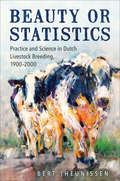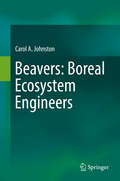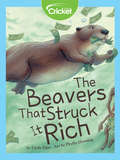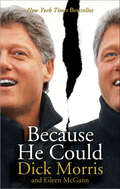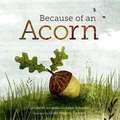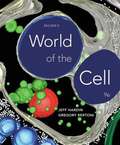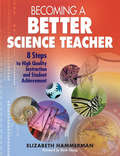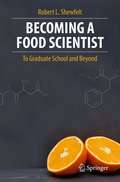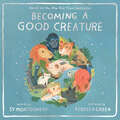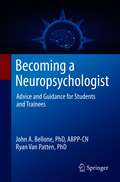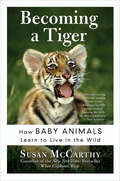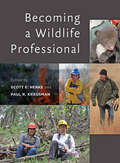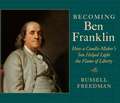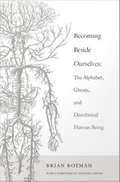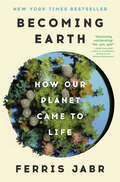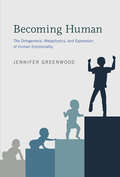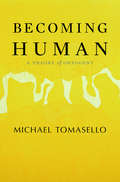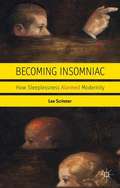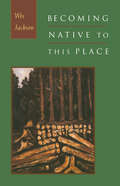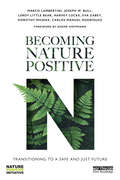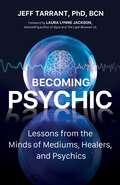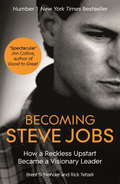- Table View
- List View
Beauty or Statistics: Practice and Science in Dutch Livestock Breeding, 1900–2000
by Bert TheunissenIn the 1970s, scientists claimed that farm animal breeding was finally evolving from an art into a science. In their view, the switch to scientific breeding was as inevitable as the ongoing process of agricultural modernization. However, the art-to-science scenario is too simplistic to do justice to the complex dynamic that characterized the transformation of the field. The livestock breeds that take centre stage in this book – dairy cattle, chickens, pigs, sheep, and horses – were products of the twentieth century. The methods used by breeders to improve their animals, however, were much older. Tracing the history of practical stockbreeding, the role of Mendelism in scientific breeding, and the emergence of quantitative genetics, Beauty or Statistics shows that the story of the scientific modernization of livestock breeding can be more fruitfully analyzed from the perspective of changing cultures of breeding, taking practical, commercial, normative, and aesthetic considerations into account.
Beavers: Boreal Ecosystem Engineers
by Carol A. JohnstonBridging the fields of ecosystem science and landscape ecology, this book integrates Dr. Carol Johnston's research on beaver ecosystem alteration at Voyageurs National Park. The findings about the vegetation, soils, and chemistry of beaver impoundments synthesized in the text provide a cohesive reference useful to wetland scientists, ecosystems and landscape ecologysts, wildlife managers, and students. The beaver, Castor canadensis, is an ecosystem engineer unequaled in its capacity to alter landscapes through browsing and dam building, whose population recovery has re-established environmental conditions that probably existed for millenia prior to its near extirpation by trapping in the 1800s and 1900s. Beavers continue to regain much of their natural range throughout North America, changing stream and forest ecosystems in ways that may be lauded or vilified. Interest in beavers by ecologists remains keen as new evidence emerges about the ecological, hydrological, and biogeochemical effects of beaver browsing and construction. There is a critical need for ecologists and land managers to understand the potential magnitude, persistence, and ecosystem services of beaver landscape transformation. The 88-year record of beaver landscape occupation and alteration documented by Dr. Carol Johnston and colleagues from aerial photography and field work provides a unique resource toward understanding the ecosystem effects and sustainability of beaver activity.
The Beavers That Struck It Rich
by Linda ZajacWhat good is money to a beaver? In this amazing yet true story, wild beavers build their dam using stolen money that was discard into a creek. While the authorities scoured the area for the cash, the beavers incorporated the bills into their dam.
Because He Could
by Dick Morris Eileen McGannWho is Bill Clinton?A man whose presidency was disgraced by impeachment -- yet who remains one of the most popular presidents of our time.A man whose autobiography, My Life, was panned by critics as a self-indulgent daily diary -- but rode the bestseller lists for months.A man whose policies changed America at the close of the twentieth century -- yet whose weakness left us vulnerable to terror at the dawn of the twenty-first.No one better understands the inner Bill Clinton, that creature of endless and vexing contradiction, than Dick Morris. From the Arkansas governor's races through the planning of the triumphant 1996 reelection, Morris was Clinton's most valued political adviser. Now, in the wake of Clinton's million-selling memoir My Life, Morris and his wife, Eileen McGann, set the record straight with Because He Could, a frank and perceptive deconstruction of the story Clinton tells -- and the many more revealing stories he leaves untold.With the same keen insight they brought to Hillary Clinton's life in their recent bestseller Rewriting History, Morris and McGann uncover the hidden sides of the complicated and sometimes dysfunctional former president. Whereas Hillary is anxious to mask who she really is, they show, Bill Clinton inadvertently reveals himself at every turn -- as both brilliant and undisciplined, charming yet often filled with rage, willing to take wild risks in his personal life but deeply reluctant to use the military to protect our national security. The Bill Clinton who emerges is familiar -- reflexively blaming every problem on right-wing persecutors or naïve advisers -- but also surprising: passive, reactive, working desperately to solve a laundry list of social problems yet never truly grasping the real thrust of his own presidency. And while he courted danger in his personal life, the authors argue that Clinton's downfall has far less to do with his private demons than with his fear of the one person who controlled his future: his own first lady.Sharp and stylishly written, full of revealing insider anecdotes, Because He Could is a fresh and probing portrait of one of the most fascinating, and polarizing, figures of our time.
Because of an Acorn
by Lola M. Schaefer Adam Schaefer Frann Preston-GannonBecause of an acorn, a tree grows, a bird nests, a seed becomes a flower. Enchanting die-cuts illustrate the vital connections between the layers of an ecosystem in this magical book. Wander down the forest path to learn how every tree, flower, plant, and animal connect to one another in spiraling circles of life. An acorn is just the beginning.
Becker's World of the Cell, Ninth Edition
by Jeff Hardin Gregory Paul Bertoni Lewis J. KleinsmithFor courses in cell biology. This package includes MasteringBiology (tm) . Explore the world of the cell Widely praised for its strong biochemistry coverage and clear, easy-to-follow explanations and figures, Becker's World of the Cell provides a beautifully-illustrated, up-to-date introduction to cell biology concepts, processes, and applications. Informed by many years of classroom experience in the sophomore-level cell biology course, the dramatically-revised Ninth Edition introduces molecular genetics concepts earlier in the text and includes more extensive coverage of key techniques in each chapter. Becker's World of the Cell provides accessible and authoritative descriptions of all major principles, as well as unique scientific insights into visualization and applications of cell and molecular biology. NOTE: Before purchasing, check with your instructor to ensure you select the correct ISBN. Several versions of Pearson's MyLab & Mastering products exist for each title, and registrations are not transferable. To register for and use Pearson's MyLab & Mastering products, you may also need a Course ID, which your instructor will provide. Used books, rentals, and purchases made outside of Pearson If purchasing or renting from companies other than Pearson, the access codes for Pearson's MyLab & Mastering products may not be included, may be incorrect, or may be previously redeemed. Check with the seller before completing your purchase. 0321934784 / 9780321934789 Becker's World of the Cell Plus MasteringBiology with eText -- Access Card Package Package consists of: 032193492X / 9780321934925 Becker's World of the Cell 0134157257 / 9780134157252 MasteringBiology with Pearson eText -- ValuePack Access Card -- for Becker's World of the Cell
Becoming a Better Science Teacher: 8 Steps to High Quality Instruction and Student Achievement
by Elizabeth HammermanThe author provides teacher-friendly tools, insights, sample lessons, and strategies for delivering quality, standards-based science curriculum and instruction that ensures student achievement.
Becoming a Food Scientist: To Graduate School and Beyond
by Robert L. ShewfeltBecoming a Food Scientist is designed as a reservoir of ideas for those beginning a graduate education in food science or beginning a professional career in the field. Although at times it may read as a how-to manual for success in graduate school, it is meant to encourage each reader to study the research process, to challenge conventional wisdom, and to develop a career path that maximizes the probability of success both in school and beyond. The author has viewed food science graduate programs through the lenses of programs at four universities and service in numerous activities with the Institute of Food Technologists. This book is thus focused on the field of food science, but it may have relevance to other scientific disciplines. The book introduces the concept of research as process in the first chapter. Subsequent chapters focus on individual unit operations of research: idea generation, problem definition, critical evaluation of the literature, method selection, experimental design, data collection, processing and analysis, and knowledge dissemination. Successful graduate students in food science must master each of these operations. The final section of the book pushes the reader beyond graduate school into its practice in the real world. Topics covered in the maturation of a food scientist include the scientific meeting, critical thinking, science and philosophy, ethics, finding and managing the literature, planning, grantsmanship, laboratory setup and management, and career development. This book should be a meaningful companion for any graduate student in the field and those transitioning from graduate school to the food science profession.
Becoming a Good Creature
by Sy MontgomeryA New York Times BestsellerSchool is not the only place to find a teacher. In this beautiful picture book, learn the many surprising lessons animals have to teach us about friendship, compassion, and how to be a better creature in the world.Beloved, bestselling author Sy Montgomery, often described as part Emily Dickinson, part Indiana Jones, has had many teachers in her life: some with two legs, others with four, or even eight! Some have had fur, feathers, or hooves. But they’ve all had one thing in common: a lesson to share.The animals Sy has met on her many world travels have taught her how to seek understanding in the most surprising ways, from being patient to finding forgiveness and respecting others. Gorillas, dogs, octopuses, tigers, and more all have shown Sy that there are no limits to the empathy and joy we can find in each other if only we take the time to connect.Based on the New York Times bestselling adult memoir, Sy Montgomery and Rebecca Green's beautiful, friendly guide is for readers young and old who wish to be better creatures in the world. Go ahead, pass it on.
Becoming a Neuropsychologist: Advice and Guidance for Students and Trainees
by John A. Bellone Ryan Van PattenBecoming a Neuropsychologist is the first comprehensive resource for students interested in pursuing a career in neuropsychology. Whether you are a student in high school, college, or graduate school, or a professional interested in a career change, this book will serve as your North Star to help you navigate on your journey. To this end, Part I answers the questions, What is Neuropsychology?, Why Neuropsychology?, and Where Do Neuropsychologists Work?, and ends with a discussion of the Challenges of Working in Neuropsychology.In Part II, you will find a step-by-step guide on how to move from where you are to the endpoint of working as a full-fledged neuropsychologist. Specifically, the authors provide concrete advice such as how to obtain adequate research and clinical training, how to apply to graduate school or doctoral internship programs, what criteria postdoctoral fellows need to meet to remain eligible for board certification, what questions to ask on interviews or when looking for your first job, and much more. The book is packed with action steps and advice for maximizing your training and avoiding common pitfalls along the way. "As our field looks to expand diversity and representation in our ranks, my hat is off to John Bellone and Ryan Van Patten for not only extending an invitation to the party but also for providing a map for how to get here. —Kathleen Fuchs, PhD, ABPP “Drs. Bellone and Van Patten have distilled the complexities of neuropsychology career development into an eminently readable and understandable roadmap. —Glenn Smith, PhD, ABPP “An easy, accessible introduction into the field of neuropsychology…The authors’ open and personal accounts of their own journeys toward becoming clinical neuropsychologists read like a fireside chat with a beloved mentor.” —Jenn Davis, PhD, ABPP “Informative, witty, and inspiring. After reading this, I feel re-inspired and excited to be pursuing a career in this field. —Ilex Beltran-Najera, MA
Becoming a Successful Scientist
by Craig LoehleLoehle (principal scientist, National Council for Air and Stream Improvement, Inc.) provides practical advice applicable for students and researchers in all scientific disciplines on how to be successful in their fields. A sampling of topics includes: strategic creativity and problem solving, analysis and solutions, conducting a research program, ethics, publishing, the practice of scientific discovery, and the myth of objective science advice. Annotation ©2010 Book News, Inc. , Portland, OR (booknews.com)
Becoming a Tiger: How Baby Animals Learn to Live in the Wild
by Susan McCarthyFrom the co–author of the New York Times bestseller When Elephants Weep comes a book that uses true stories backed by scientific research to explore the way young animals discover their worlds and learn how to survive. How does a baby animal figure out how to get around in the world? How much of what animals know is instinctive, and how much must they learn? In Becoming a Tiger, bestselling author Susan McCarthy addresses these intriguing matters, presenting fascinating and funny examples of animal behaviour in the laboratory and in the wild. McCarthy shows us how baby animals transform themselves from clueless kittens, clumsy cubs, or scrawny chicks into efficient predators, successful foragers, or deft nest–builders. From geese to mice, dolphins to orang–utans, bats to (of course) tigers, McCarthy's warm, amusing, and insightful examinations of animal life and developments provides a surprising window into the mental worlds of our fine fuzzy, furred, finned, and feathered friends. oReaders will be fascinated by a close look at animal intelligence, learning, and family life.
Becoming a Wildlife Professional
by Scott E. Henke and Paul R. KrausmanThe essential guide for anyone planning a career in wildlife management and conservation.Working with wildlife can be a thrilling adventure steeped in the wonders of the natural world, but entering the field demands a strong personal commitment. With proper training and guidance, students can transform themselves into competitive applicants and forge successful careers. This book reveals the best way to become a wildlife management professional. Becoming a Wildlife Professional is the first comprehensive book to describe the entry-level jobs available for the next generation of wildlife biologists and conservationists. Scott E. Henke and Paul R. Krausman include detailed chapters on how students should prepare for a vocation in the wildlife profession while offering pragmatic advice about applying for and obtaining a job. The core of the book presents more than 100 diverse career options that are available to aspiring wildlife workers, including work in biological field research, forestry, rehabilitation, ranching, photography, and refuge management. It also details each position's educational and technical requirements, challenges, salaries, and opportunities for advancement.Bringing together useful advice from a range of seasoned experts who actually hold these jobs and have used these techniques to secure employment, Becoming a Wildlife Professional conveys important philosophical messages about the responsibilities and challenges of a career in wildlife conservation and management. This how-to manual is an essential text for wildlife science students interested in making themselves marketable for employers across a wide spectrum of wildlife jobs. Chapter Author Contributors: Rick Baydack, Jessica L. Blickley, Monika Burchette, Shawn Cleveland, Kristy Deiner, Kelly Garbach, Ashley R. Gramza, Jim Heffelfinger, Scott E. Henke, Fidel Hernández, Serra J. Hoagland, Jessica A. Homyack, Winifred B. Kessler, Holley Kline, Lianne Koczur, Michel T. Kohl, John L. Koprowski, Blaise Korzekwa, Paul R. Krausman, Iara Lacher, Mariah H. Meek, Kelly F. Millenbah, Karen E. Munroe, Kerry L. Nicholson, John P. O'Loughlin, Lindsey Phillips, Lauren M. Porensky, William F. Porter, Terra Rentz, Nova J. Silvy, Kelley M. Stewart, Marit L. Wilkerson, Eric Winford. An additional 52 wildlife professionals describe the work of the profession. Published in association with The Wildlife Society.
Becoming Ben Franklin: How a Candle-Maker's Son Helped Light the Flame of Liberty
by Russell FreedmanIn 1723 Ben Franklin arrived in Philadelphia as a poor and friendless seventeen-year-old who had run away from his family and an apprenticeship in Boston. Sixty-two years later he stepped ashore in nearly the same spot but was greeted by cannons, bells, and a cheering crowd, now a distinguished statesman, renowned author, and world-famous scientist. Freedman's riveting story of how a rebellious apprentice became an American icon comes in an elegantly designed book filled with art and includes a timeline, source notes, bibliography, and index
Becoming Beside Ourselves: The Alphabet, Ghosts, and Distributed Human Being
by Brian RotmanBecoming Beside Ourselves continues the investigation that the renowned cultural theorist and mathematician Brian Rotman began in his previous books Signifying Nothing and Ad Infinitum. . . The Ghost in Turing's Machine: exploring certain signs and the conceptual innovations and subjectivities that they facilitate or foreclose. In Becoming Beside Ourselves, Rotman turns his attention to alphabetic writing or the inscription of spoken language. Contending that all media configure what they mediate, he maintains that alphabetic writing has long served as the West's dominant cognitive technology. Its logic and limitations have shaped thought and affect from its inception until the present. Now its grip on Western consciousness is giving way to virtual technologies and networked media, which are reconfiguring human subjectivity just as alphabetic texts have done for millennia. Alphabetic texts do not convey the bodily gestures of human speech: the hesitations, silences, and changes of pitch that infuse spoken language with affect. Rotman suggests that by removing the body from communication, alphabetic texts enable belief in singular, disembodied, authoritative forms of being such as God and the psyche. He argues that while disembodied agencies are credible and real to "lettered selves," they are increasingly incompatible with selves and subjectivities formed in relation to new virtual technologies and networked media. Digital motion-capture technologies are restoring gesture and even touch to a prominent role in communication. Parallel computing is challenging the linear thought patterns and ideas of singularity facilitated by alphabetic language. Barriers between self and other are breaking down as the networked self is traversed by other selves to become multiple and distributed, formed through many actions and perceptions at once. The digital self is going plural, becoming beside itself.
Becoming Biosubjects
by Priscilla Walton Rebecca Sullivan Neil Gerlach Sheryl HamiltonBecoming Biosubjects examines the ways in which the Canadian government, media, courts, and everyday Canadians are making sense of the challenges being posed by biotechnologies. The authors argue that the human body is now being understood as something that is fluid and without fixed meaning. This has significant implications both for how we understand ourselves and how we see our relationships with other forms of life.Focusing on four major issues, the authors examine the ways in which genetic technologies are shaping criminal justice practices, how policies on reproductive technologies have shifted in response to biotechnologies, the debates surrounding the patenting of higher life forms, and the Canadian (and global) response to bioterrorism. Regulatory strategies in government and the courts are continually evolving and are affected by changing public perceptions of scientific knowledge. The legal and cultural shifts outlined in Becoming Biosubjects call into question what it means to be a Canadian, a citizen, and a human being.
Becoming Creole: Nature and Race in Belize (Critical Caribbean Studies)
by Melissa A. JohnsonBecoming Creole explores how people become who they are through their relationships with the natural world, and it shows how those relationships are also always embedded in processes of racialization that create blackness, brownness, and whiteness. Taking the reader into the lived experience of Afro-Caribbean people who call the watery lowlands of Belize home, Melissa A. Johnson traces Belizean Creole peoples’ relationships with the plants, animals, water, and soils around them, and analyzes how these relationships intersect with transnational racial assemblages. She provides a sustained analysis of how processes of racialization are always present in the entanglements between people and the non-human worlds in which they live.
Becoming Earth: How Our Planet Came to Life
by Ferris JabrA vivid account of a major shift in how we understand Earth, from an exceptionally talented new voice. Earth is not simply an inanimate planet on which life evolved, but rather a planet that came to life.&“Glorious . . . full of achingly beautiful passages, mind-bending conceptual twists, and wonderful characters. Jabr reveals how Earth has been profoundly, miraculously shaped by life.&”—Ed Yong, Pulitzer Prize winner and bestselling author of An Immense WorldFINALIST FOR THE LOS ANGELES TIMES BOOK PRIZE • FINALIST FOR THE OREGON BOOK AWARD • AN AMERICAN LIBRARY ASSOCIATION NOTABLE BOOK OF THE YEAR A BEST BOOK OF THE YEAR: Smithsonian, Chicago Public Library, Booklist, Scientific American, NatureA BEST BOOK OF THE SUMMER: The Atlantic and NPR&’s Science FridayOne of humanity&’s oldest beliefs is that our world is alive. Though once ridiculed by some scientists, the idea of Earth as a vast interconnected living system has gained acceptance in recent decades. We, and all living things, are more than inhabitants of Earth—we are Earth, an outgrowth of its structure and an engine of its evolution. Life and its environment have coevolved for billions of years, transforming a lump of orbiting rock into a cosmic oasis—a planet that breathes, metabolizes, and regulates its climate.Acclaimed science writer Ferris Jabr reveals a radical new vision of Earth where lush forests spew water, pollen, and bacteria to summon rain; giant animals engineer the very landscapes they roam; microbes chew rock to shape continents; and microscopic plankton, some as glittering as carved jewels, remake the air and sea.Humans are one of the most extreme examples of life transforming Earth. Through fossil fuel consumption, agriculture, and pollution, we have altered more layers of the planet in less time than any other species, pushing Earth into a crisis. But we are also uniquely able to understand and protect the planet&’s wondrous ecology and self-stabilizing processes. Jabr introduces us to a diverse cast of fascinating people who have devoted themselves to this vital work.Becoming Earth is an exhilarating journey through the hidden workings of our planetary symphony—its players, its instruments, and the music of life that emerges—and an invitation to reexamine our place in it. How well we play our part will determine what kind of Earth our descendants inherit for millennia to come.
Becoming Human: The Ontogenesis, Metaphysics, and Expression of Human Emotionality (Life and Mind: Philosophical Issues in Biology and Psychology)
by Jennifer GreenwoodA novel, wide-ranging, and comprehensive account of how human emotionality develops, proposing a process in which “nature” and “nurture” are integrated. In Becoming Human, Jennifer Greenwood proposes a novel theory of the development of human emotionality. In doing so, she makes important contributions to the nature-nurture debate in emotion theory and the intracranialist–transcranialist debate in philosophy of mind. Greenwood shows that the distinction between nature and nurture is unfounded; biological and cultural resources are deeply functionally integrated throughout the developmental process. She also shows that human emotional and language development are transcranialist achievements; human ontogenesis takes place in extended cognitive systems that include environmental, technological, and sociocultural resources. Greenwood tells the story of how each of us becomes a full human being: how human brains are constructed and how these brains acquire their contents through massive epigenetic scaffolding. After an introduction in which she explains the efficiency of the human newborn as a learning machine, Greenwood reviews traditional and contemporary theories of emotion, highlighting both strengths and limitations. She addresses the intracranialist–transcranialist debate, arguing that transcranialists have failed to answer important intracranialist objections; describes the depth of the functional integration of intraneural and external resources in emotional ontogenesis; examines early behavior patterns that provide the basis for the development of language; explains the biosemantic theory of representational content, and the wider cognitive systems that define it; and argues that language production and comprehension are always context dependent. Finally, in light of the deep and complex functional integration of neural, corporeal, and sociocultural resources in human ontogenesis, she recommends a multidisciplinary, collaborative approach for future research.
Becoming Human: A Theory of Ontogeny
by Michael TomaselloVirtually all theories of how humans have become a distinctive species focus on evolution. Here, Michael Tomasello proposes a complementary theory focused on ontogenetic processes. Built on the essential ideas of Vygotsky, his data-driven model explains how those things that make us most human are constructed during the first six years of life.
Becoming Insomniac
by Lee ScrivnerA study of the history of modern insomnia, this book explores how poets, journalists, and doctors of the Victorian period found themselves in near-universal agreement that modernity and sleep were somehow incompatible. It investigates how psychologists, philosophers and literary artists worked to articulate its causes, and its potential cures.
Becoming Native to This Place (Blazer Lectures)
by Wes JacksonIn six compelling essays, Wes Jackson lays the foundation for a new farming economy grounded in nature's principles and located in dying small towns and rural communities. Exploding the tenets of industrial agriculture, Jackson seeks to integrate food production with nature in a way that sustains both. His writing is anchored in his work with The Land Institute, lending authenticity to topics that-in the hands of other writers-too often fail to escape the realm of the conceptual.
Becoming Nature Positive: Transitioning to a Safe and Just Future (Routledge Studies in Conservation and the Environment)
by Marco Lambertini Joseph W. Bull Leroy Little Bear Harvey Locke Eva Zabey Dorothy Maseke Carlos Manuel RodríguezAs humanity sits at an existential crossroads, this book introduces the need to build a nature-positive future to secure the functioning and stability of Earth systems essential to the survival and wellbeing of present and future human generations as well as the rest of Earth's amazing diversity of life. Alongside the change in climate, a more silent but equally terrifying crisis is unfolding: the loss of nature and biodiversity. These twin crises are in fact interconnected. After decades of ignoring our impacts on the natural world, we are beginning to realise that nature conservation is a security issue for humanity, and an imperative for intersectional and intergenerational justice. For these reasons, we must embrace a transition from a nature-negative to a nature-positive society, one that ensures human development and addresses today’s inequality, while conserving, restoring and sustainably benefiting from nature's resources and services. A Nature Positive future is one with more nature than today: more forests, more fish, more pollinators, more soil biodiversity, with benefits for the Planet and for us. In this book we define what becoming Nature Positive means from a variety of perspectives, what it takes to deliver it and why it is possible and, most importantly, necessary.This book is essential reading for those concerned with conserving nature and securing a safe future for humanity in the face of climate breakdown, biodiversity loss, and ecological collapse. The future can be bright. The choice is ours.
Becoming Psychic: Lessons from the Minds of Mediums, Healers, and Psychics
by Jeff TarrantA scientific, brain-based approach that provides an understanding of psychic abilities, spirit communication, and energy healing.Jeff Tarrant was fascinated by the paranormal as a child but then his training as a neuropsychologist turned him into a hardcore skeptic. If something could not be reliably and consistently demonstrated in the laboratory, then it wasn&’t real. These rigid ideas were gradually worn away as he repeatedly witnessed and experienced things that simply should not be possible—telekenesis, clairvoyance, telepathy, mediumship, energy healing, and more….This book follows his journey of studying, interviewing, and testing a wide variety of mediums, psychics, and healers as he tries to determine what is going on in their brains when they engage in these supernormal abilities. Readers will get to know these gifted people, exploring what makes them tick and discovering firsthand evidence that this stuff is real. If we can understand how the psychic mind works, might the rest of us be able to use this information to help develop our own abilities? Becoming Psychic uses knowledge uncovered through case studies, expert interviews, and research to offer a variety of practical insights to help readers develop their own psi abilities. Each chapter concludes with a &“try it yourself&” section, helping readers apply specific concepts and techniques into their own psychic development practice. In addition to uncovering the tips, skills, and tools identified in Tarrant's research, the book also explores how to use brain-hacking technology, such as neurofeedback, audio visual entrainment, and pulsed electromagnetic fields to &“nudge&” the brain toward heightened psychic abilities--as well as quieting internal chatter, supporting empathy, and enhancing creativity—all the mental skills necessary to move from balance and wellness to the extraordinary! Becoming Psychic fills an important gap in the psychic development literature. There are books that tell the stories of psychics and mediums. There are books that focus on the science and evidence for these practices, and there are books devoted to teaching you how to develop your own skills. This book contains all of the above and more!
Becoming Steve Jobs: The evolution of a reckless upstart into a visionary leader
by Brent Schlender Rick TetzeliTHE SUNDAY TIMES AND #1 INTERNATIONAL BESTSELLER - with a new foreword by Silicon Valley legend Marc Andreessen.'For my money, a better book about Jobs than Walter Isaacson's biography' New Yorker'A fascinating reinterpretation of the Steve Jobs story' Sunday TimesWe all think we know who Steve Jobs was, what made him tick, and what made him succeed. Yet the single most important question about him has never been answered. The young, impulsive, egotistical genius was ousted in the mid-80s from the company he founded, exiled from his own kingdom and cast into the wilderness. Yet he returned a decade later to transform the ailing Apple into the most successful company the world had ever seen. How did this reckless upstart transform himself into a visionary business leader? The first comprehensive study of Jobs' career following his dismissal from Apple, written with unparalleled access and insight, BECOMING STEVE JOBS offers a startling new portrait of the most important business figure in modern history. The most intimate biography yet of Jobs, written by the journalist who knew him better than any other, BECOMING STEVE JOBS draws on recently discovered interviews that have never before seen the light of day, and answers for the first time the most pressing questions about what made this legendary business leader such a success.
